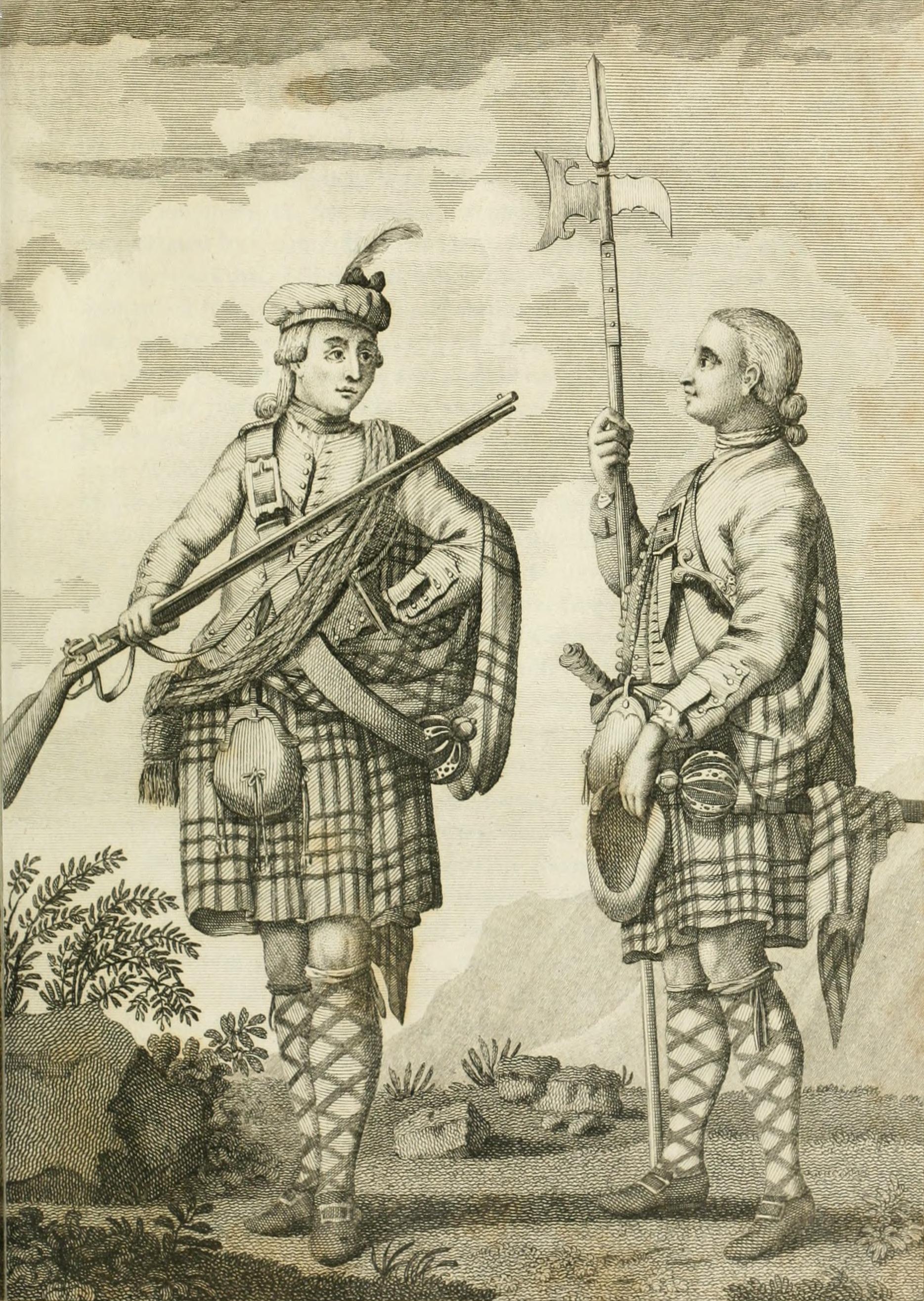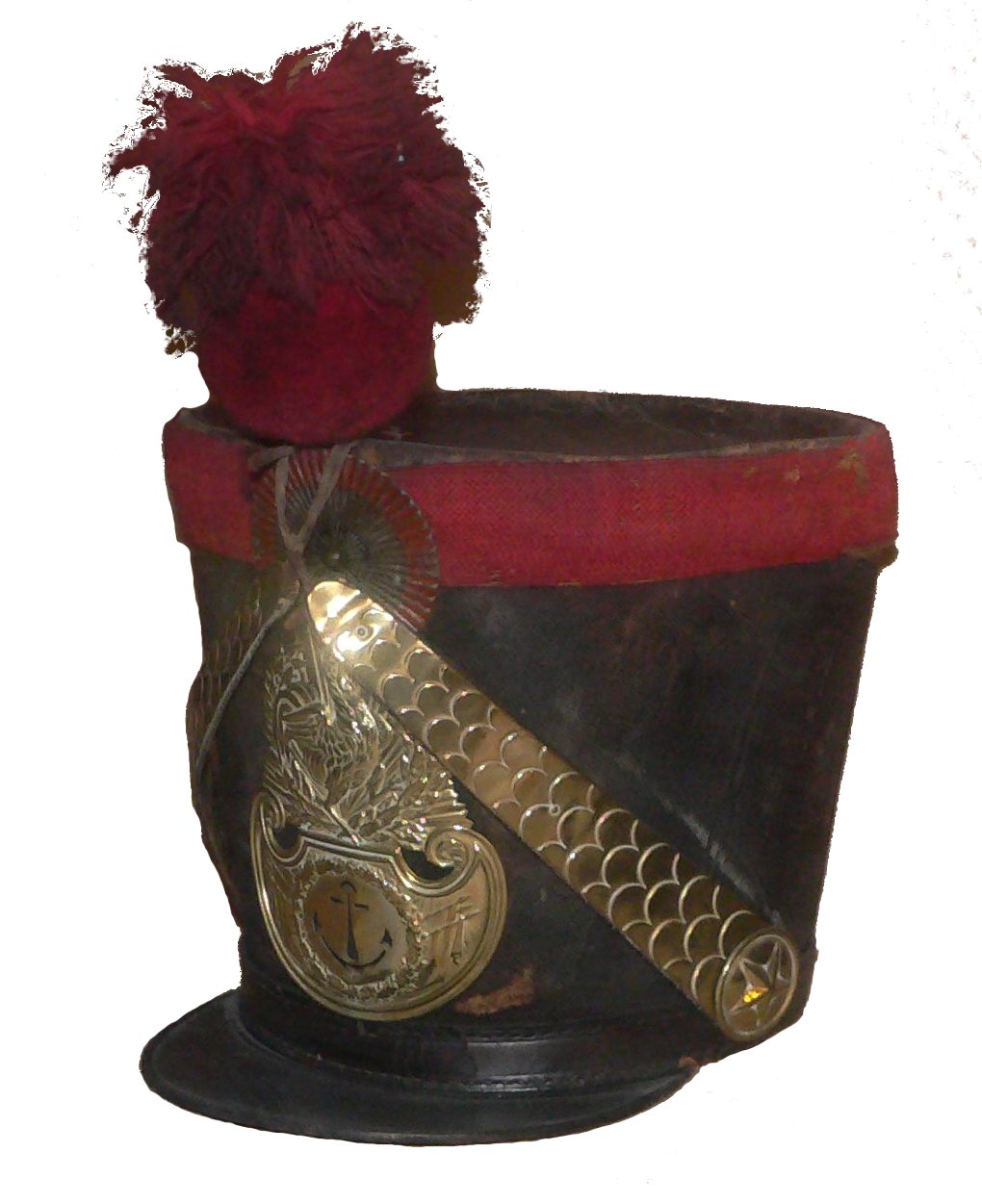|
8th Line Battalion, King's German Legion
The 8th Line Battalion of the King's German Legion was a Hanoverian unit in British service during the Napoleonic Wars. Chronology The unit was raised during the year 1806 as the last out of eight line battalions that the Legion levied in total. It was only half completed when the British Expeditionary force withdrew from Hanover early 1806 and subsequently filled up as recruits became available. The battalion was initially brigaded with the 7th Line Battalion of the Legion. It served from 1805 until 1816 in Ireland, Walcheren, Copenhagen, Sicily, Peninsula and Belgium. It took part in the Northern Italian campaign, resulting in the capture of Genoa in April 1814. On 18 June 1815, during the Battle of Waterloo, the battalion was nearly wiped out during the fighting in the centre of Wellington's battle line and lost a flag. Uniforms and equipment Uniform and Equipment of the Legion's Line battalions was of standard British pattern of the time. In accord it was repeatedly revised ... [...More Info...] [...Related Items...] OR: [Wikipedia] [Google] [Baidu] |
King's German Legion
The King's German Legion (KGL; german: Des Königs Deutsche Legion, semantically erroneous obsolete German variations are , , ) was a British Army unit of mostly expatriated German personnel during the period 1803–16. The legion achieved the distinction of being the only German force to fight without interruption against the French during the Napoleonic Wars. The legion was formed within months of the dissolution of the Electorate of Hanover in 1803 and constituted as a mixed corps by the end of 1803. Although the legion never fought autonomously and remained a part of the British Army during the Napoleonic Wars (1804–15), it played a vital role in several campaigns, most notably the Walcheren Campaign, the Peninsular War, and the Hundred Days (1815). The legion was disbanded in 1816. Several of the units were incorporated into the army of the Kingdom of Hanover, and became later a part of the Imperial German Army after unification in 1871. The British German Legion, ... [...More Info...] [...Related Items...] OR: [Wikipedia] [Google] [Baidu] |
Electorate Of Hanover
The Electorate of Hanover (german: Kurfürstentum Hannover or simply ''Kurhannover'') was an electorate of the Holy Roman Empire, located in northwestern Germany and taking its name from the capital city of Hanover. It was formally known as the Electorate of Brunswick-Lüneburg (german: Kurfürstentum Braunschweig-Lüneburg). For most of its existence, the electorate was ruled in personal union with Great Britain and Ireland following the Hanoverian Succession. The Duchy of Brunswick-Lüneburg had been split in 1269 between different branches of the House of Welf. The Principality of Calenberg, ruled by a cadet branch of the family, emerged as the largest and most powerful of the Brunswick-Lüneburg states. In 1692, the Holy Roman Emperor elevated the Prince of Calenberg to the College of Electors, creating the new Electorate of Brunswick-Lüneburg. The fortunes of the Electorate were tied to those of Great Britain by the Act of Settlement 1701 and Act of Union 1707, which ... [...More Info...] [...Related Items...] OR: [Wikipedia] [Google] [Baidu] |
Napoleonic Wars
The Napoleonic Wars (1803–1815) were a series of major global conflicts pitting the French Empire and its allies, led by Napoleon I, against a fluctuating array of European states formed into various coalitions. It produced a period of French domination over most of continental Europe. The wars stemmed from the unresolved disputes associated with the French Revolution and the French Revolutionary Wars consisting of the War of the First Coalition (1792–1797) and the War of the Second Coalition (1798–1802). The Napoleonic Wars are often described as five conflicts, each termed after the coalition that fought Napoleon: the Third Coalition (1803–1806), the Fourth (1806–1807), the Fifth (1809), the Sixth (1813–1814), and the Seventh (1815) plus the Peninsular War (1807–1814) and the French invasion of Russia (1812). Napoleon, upon ascending to First Consul of France in 1799, had inherited a republic in chaos; he subsequently created a state with stable financ ... [...More Info...] [...Related Items...] OR: [Wikipedia] [Google] [Baidu] |
7th Line Battalion
7 (seven) is the natural number following 6 and preceding 8. It is the only prime number preceding a cube. As an early prime number in the series of positive integers, the number seven has greatly symbolic associations in religion, mythology, superstition and philosophy. The seven Classical planets resulted in seven being the number of days in a week. It is often considered lucky in Western culture and is often seen as highly symbolic. Unlike Western culture, in Vietnamese culture, the number seven is sometimes considered unlucky. It is the first natural number whose pronunciation contains more than one syllable. Evolution of the Arabic digit In the beginning, Indians wrote 7 more or less in one stroke as a curve that looks like an uppercase vertically inverted. The western Ghubar Arabs' main contribution was to make the longer line diagonal rather than straight, though they showed some tendencies to making the digit more rectilinear. The eastern Arabs developed ... [...More Info...] [...Related Items...] OR: [Wikipedia] [Google] [Baidu] |
Battle Of Waterloo
The Battle of Waterloo was fought on Sunday 18 June 1815, near Waterloo, Belgium, Waterloo (at that time in the United Kingdom of the Netherlands, now in Belgium). A French army under the command of Napoleon was defeated by two of the armies of the Seventh Coalition. One of these was a British-led coalition consisting of units from the United Kingdom of Great Britain and Ireland, United Kingdom, the Netherlands, Kingdom of Hanover, Hanover, Duchy of Brunswick, Brunswick, and Duchy of Nassau, Nassau, under the command of the Duke of Wellington (referred to by many authors as ''the Anglo-allied army'' or ''Wellington's army''). The other was composed of three corps of the Kingdom of Prussia, Prussian army under the command of Field Marshal Gebhard Leberecht von Blücher, von Blücher (the fourth corps of this army fought at the Battle of Wavre on the same day). The battle marked the end of the Napoleonic Wars. The battle was contemporaneously known as the Battle of Mont Saint-J ... [...More Info...] [...Related Items...] OR: [Wikipedia] [Google] [Baidu] |
Brown Bess
"Brown Bess" is a nickname of uncertain origin for the British Army's muzzle-loading smoothbore flintlock Land Pattern Musket and its derivatives. The musket design remained in use for over a hundred years with many incremental changes in its design. These versions include the Long Land Pattern, the Short Land Pattern, the India Pattern, the New Land Pattern Musket and the Sea Service Musket. The Long Land Pattern musket and its derivatives, all 0.75 inch calibre flintlock muskets, were the standard long guns of the British Empire's land forces from 1722 until 1838, when they were superseded by a percussion cap smoothbore musket. The British Ordnance System converted many flintlocks into the new percussion system known as the Pattern 1839 Musket. A fire in 1841 at the Tower of London destroyed many muskets before they could be converted. Still, the Brown Bess saw service until the middle of the nineteenth century. Most male citizens of the thirteen colonies of British Americ ... [...More Info...] [...Related Items...] OR: [Wikipedia] [Google] [Baidu] |
Shako
A shako (, , or ) is a tall, cylindrical military cap, usually with a visor, and sometimes tapered at the top. It is usually adorned with an ornamental plate or badge on the front, metallic or otherwise; and often has a feather, plume (see hackle) or pompom attached at the top. Origins The word ''shako'' originated from the Hungarian name for the ''peak'', which Hungarian border soldiers ( ''Grenz-Infanterie'') added around 1790 to their previously visorless stovepipe-style hats. Originally these hats were part of the clothing commonly worn by shepherds, before being added to the uniform of the Hungarian hussar in the early 18th century. Other spellings include ''chako'', ''czako'', ''sjako'', ''schako'', ''schakot'' and ''tschako''. From 1800 on, the shako became a common military headdress worn by the majority of regiments in the armies of Europe and the Americas. Replacing in most instances the light bicorne, the shako was initially considered an improvement. Made of heavy ... [...More Info...] [...Related Items...] OR: [Wikipedia] [Google] [Baidu] |
Battalions Of The British Army
A battalion is a military unit, typically consisting of 300 to 1,200 soldiers commanded by a lieutenant colonel, and subdivided into a number of companies (usually each commanded by a major or a captain). In some countries, battalions are exclusively infantry, while in others battalions are unit-level organizations. The word battalion came into the English language in the 16th century from the French language ( French: ''bataillon'' meaning "battle squadron"; Italian: ''battaglione'' meaning the same thing; derived from the Vulgar Latin word ''battalia'' meaning "battle" and from the Latin word ''bauttere'' meaning "to beat" or "to strike"). The first use of the word in English was in the 1580s. Description A battalion comprises two or more primary mission companies which are often of a common type (e.g., infantry, tank, or maintenance), although there are exceptions such as combined arms battalions in the U.S. Army. In addition to the primary mission companies, a battalio ... [...More Info...] [...Related Items...] OR: [Wikipedia] [Google] [Baidu] |
Military Units And Formations Established In 1803
A military, also known collectively as armed forces, is a heavily armed, highly organized force primarily intended for warfare. It is typically authorized and maintained by a sovereign state, with its members identifiable by their distinct military uniform. It may consist of one or more military branches such as an army, navy, air force, space force, marines, or coast guard. The main task of the military is usually defined as defence of the state and its interests against external armed threats. In broad usage, the terms ''armed forces'' and ''military'' are often treated as synonymous, although in technical usage a distinction is sometimes made in which a country's armed forces may include both its military and other paramilitary forces. There are various forms of irregular military forces, not belonging to a recognized state; though they share many attributes with regular military forces, they are less often referred to as simply ''military''. A nation's military may f ... [...More Info...] [...Related Items...] OR: [Wikipedia] [Google] [Baidu] |



